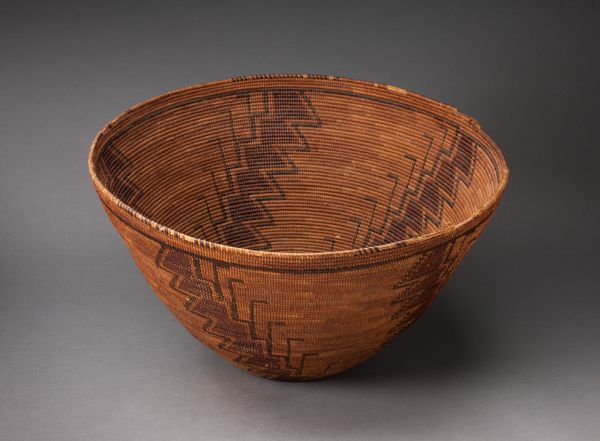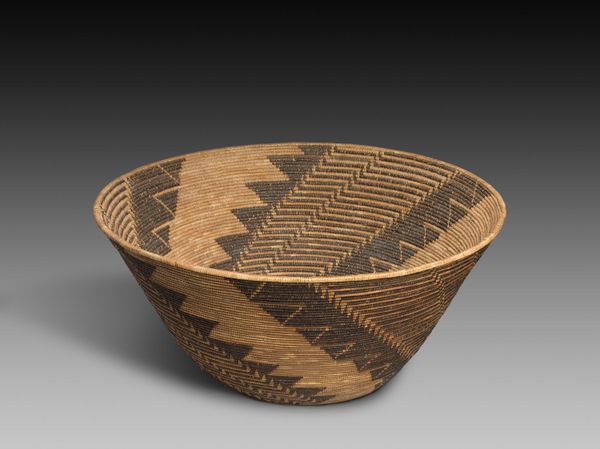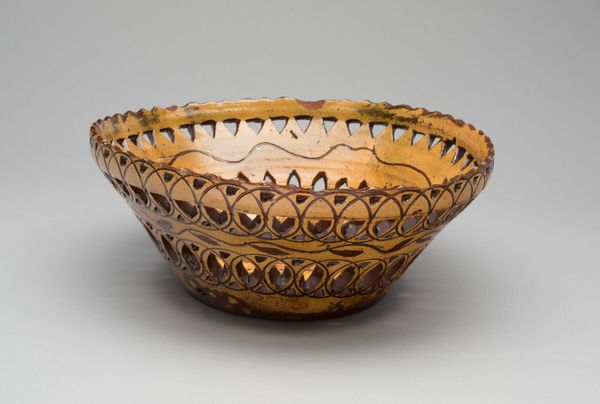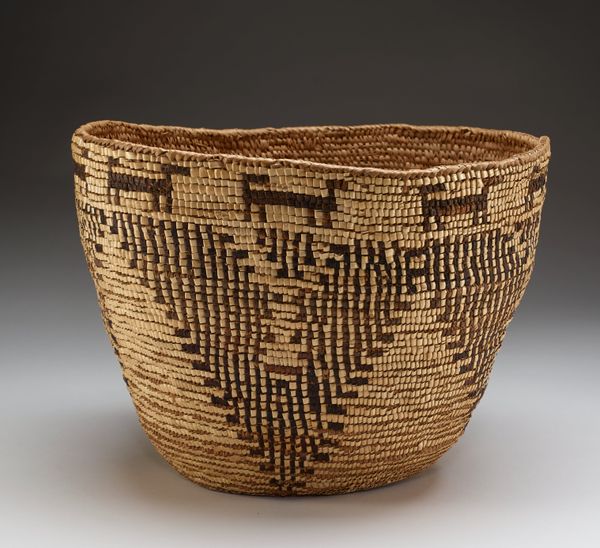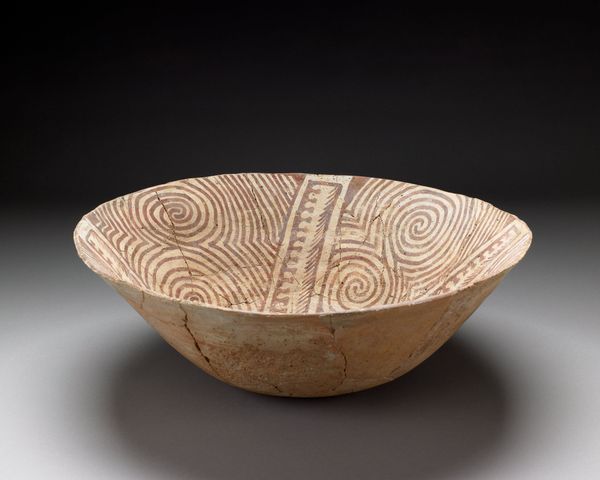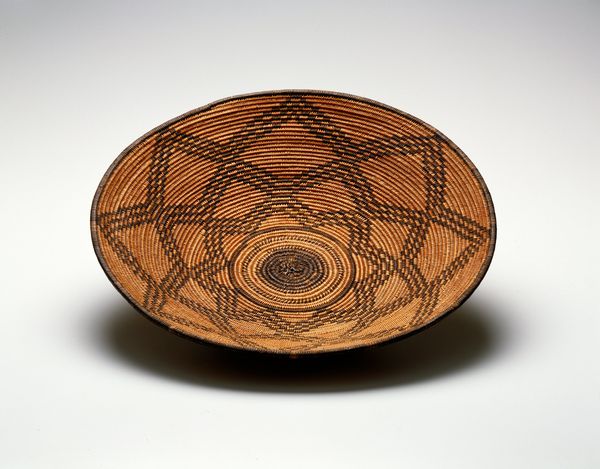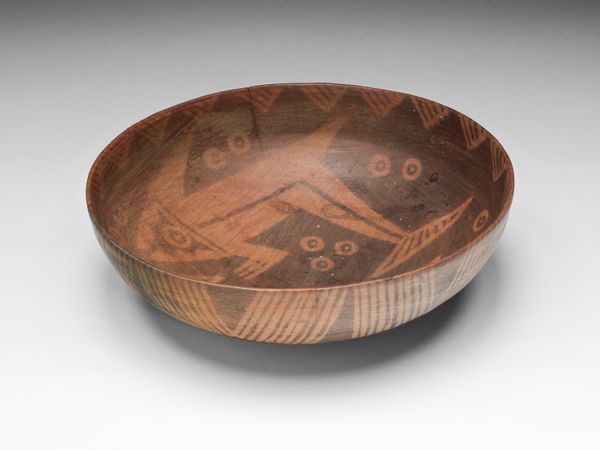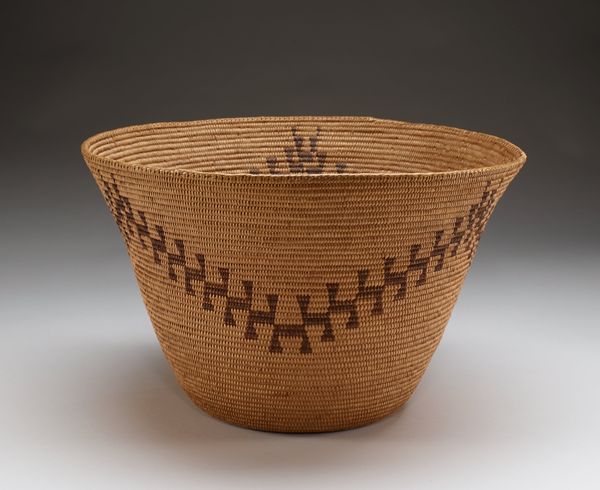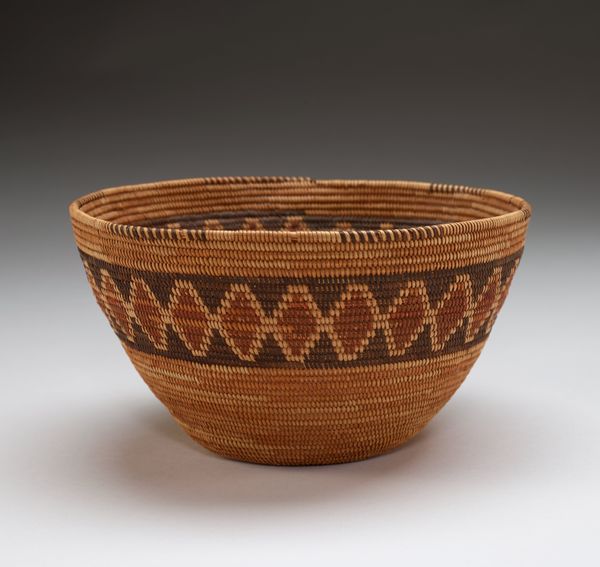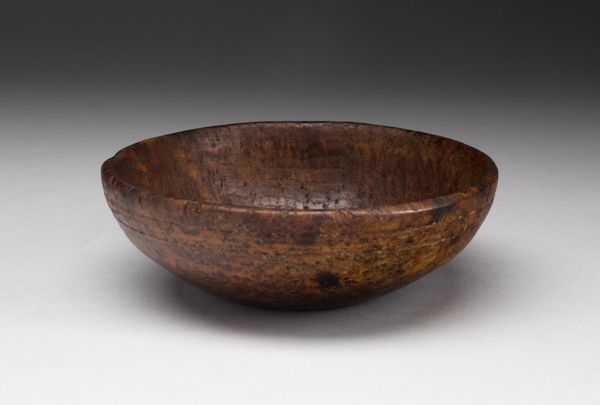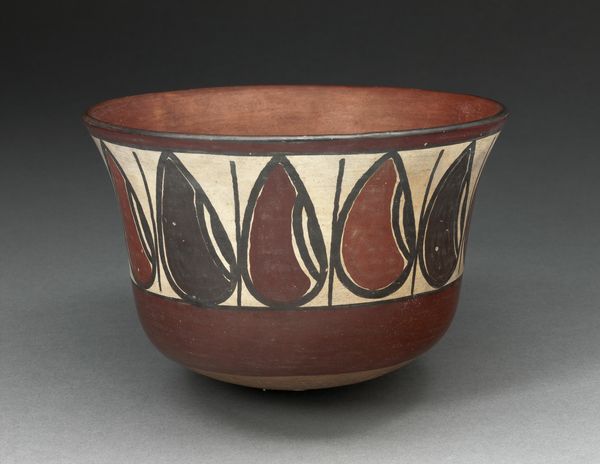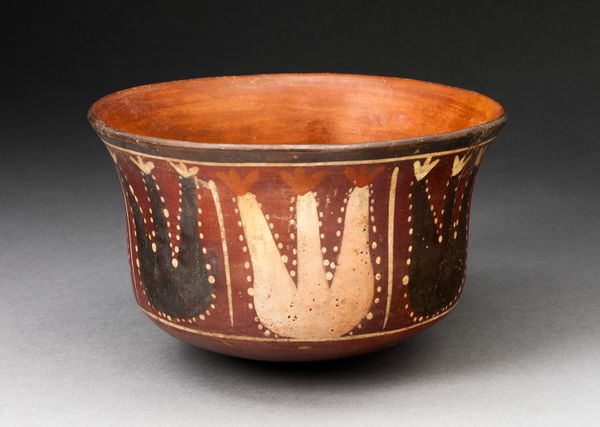
fibre-art, weaving, textile
#
fibre-art
#
weaving
#
textile
#
stoneware
#
geometric
#
ceramic
#
indigenous-americas
Dimensions: H. 9 3/4 x Diam. 20 1/4 in. (24.8 x 51.4 cm)
Copyright: Public Domain
Editor: We’re looking at a "Cooking Basket," likely created between 1860 and 1900 by Mary Tecuyas. It's a woven fibre art piece. I'm struck by the repeated geometric patterns and the warm, earthy tones of the basket. What story do you think it tells? Curator: Well, consider what a cooking basket signified within its cultural context. This is more than just a vessel; it is a symbol of sustenance, home, and the perpetuation of cultural memory. Those geometric designs aren't just decorative, you know. Editor: No, of course. They seem almost like… lightning bolts, maybe? Curator: Precisely! Or perhaps mountains, or the teeth of an animal. Think about what these symbols would have meant to the weaver and her community. Do you see a connection between the materials, the form, and the daily life of the maker? Editor: I guess the fibre material speaks to resourcefulness. It represents using what’s available in nature. And making something practical but beautiful feels important. Curator: Exactly. The act of weaving itself, the careful intertwining of fibers… it mirrors the interconnectedness of community, the blending of tradition and innovation. How does understanding the symbolism change your initial perception? Editor: It makes me appreciate the depth of meaning woven into something that, at first glance, seems simple. Curator: Indeed. It's a powerful reminder that even the most functional objects can carry profound cultural and spiritual weight, revealing cultural memory and continuity. Editor: I’ll definitely think about art differently from now on. I thought it was merely about esthetics and technique! Curator: It’s both, technique serving a deep, often unspoken need.
Comments
No comments
Be the first to comment and join the conversation on the ultimate creative platform.
